Are you considering taking some time off work due to personal reasons but unsure how to ask your employer? Crafting a well-structured leave request letter can make all the difference in getting that time you need. Let's dive into the essential components that will help you communicate your situation effectively and professionally. Ready to learn how to write the perfect letter for your unpaid leave request?
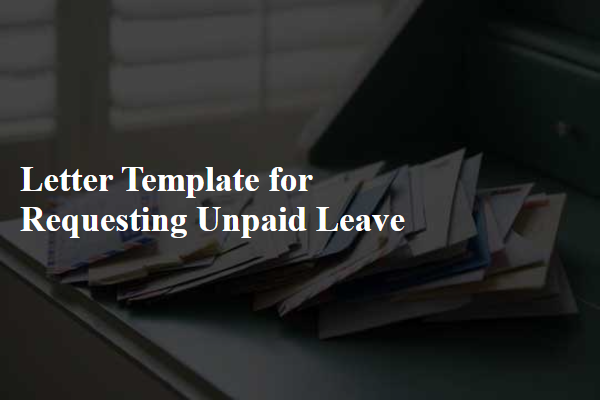
Clear subject line
Subject: Request for Unpaid Leave Employee (Name) from (Department) at (Company Name) seeks unpaid leave for (specific dates or duration). Personal circumstances warrant temporary absence. Committed to ensuring smooth workflow during leave by coordinating with (colleagues or team members), preparing (necessary documentation or handover notes). Appreciate understanding and support regarding this request.
Formal salutation
In a corporate environment, an effective request for unpaid leave can be essential for balancing personal matters while maintaining professional commitments. Employees might find themselves needing to take a break from work obligations due to various reasons such as family emergencies, health issues, or personal development opportunities. A clear formal salutation, followed by detailing the leave request, duration, and rationale, ensures that the request is taken seriously. Providing context, such as specific dates (e.g., from February 1 to February 15), along with an assurance of completing pending tasks or delegating responsibilities, fosters a cooperative atmosphere with management. In this scenario, communication should be respectful, highlighting the employee's commitment to the organization while acknowledging their current needs.
Specific leave duration and dates
When employees face personal circumstances, requesting unpaid leave can be essential. For instance, an employee might seek a two-week unpaid leave from March 1 to March 15, 2024, to care for a family member undergoing surgery at a local hospital. This request must include details such as job title, department, and a clear reason for the leave. Consequently, supervisors need to consider factors like project deadlines and team workload before achieving an arrangement that suits both the employee's needs and the company's responsibilities. Providing adequate notice and documentation enhances the likelihood of approval.
Reason for leave request
An unpaid leave request often arises due to personal circumstances or urgent matters requiring focused attention. Examples include family emergencies, prolonged illness, or educational pursuits. Employees may specify durations such as a few weeks or months depending on their situation. Adequate notice, typically two to four weeks before the intended leave, enhances communication. Additionally, some organizations may have established policies guiding unpaid leave, with relevant forms or documentation needed to support the request. Understanding company protocols can facilitate a smoother process and demonstrate professionalism during this period.
Contact availability during leave
When requesting unpaid leave, it is essential to inform your employer about your contact availability during this period. Specify the dates for the leave, indicating the start and end date clearly. For instance, if the leave spans from January 15 to February 15, it is crucial to mention this timeframe. Additionally, indicate your preferred method of communication, whether via email or phone, along with any specific hours when you may be reachable. Providing alternative contacts or delegation of responsibilities can also be beneficial for team continuity during your absence. Make sure to express your commitment to ensuring a smooth transition before and after the leave.

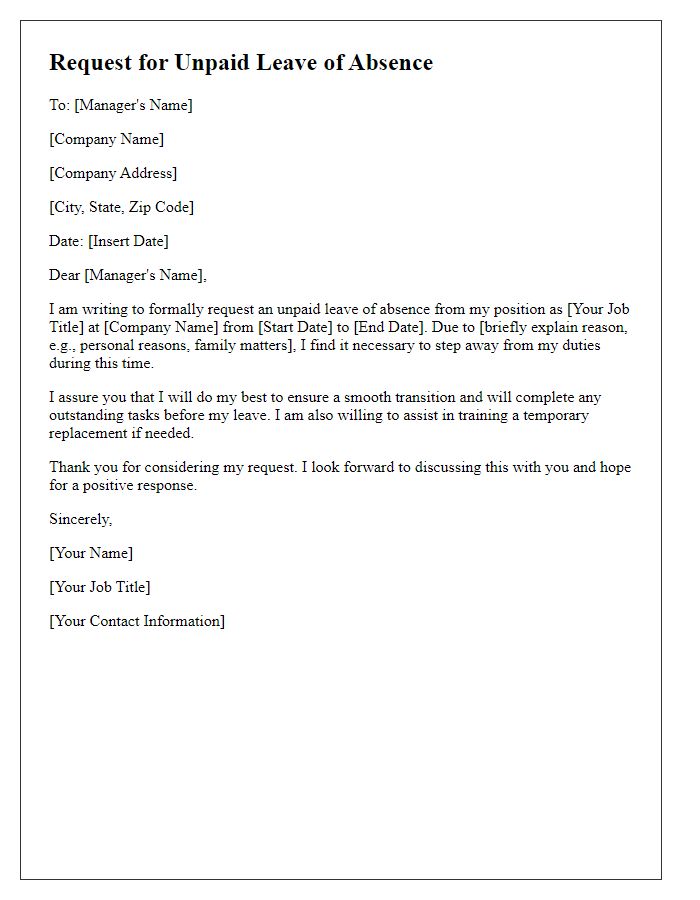
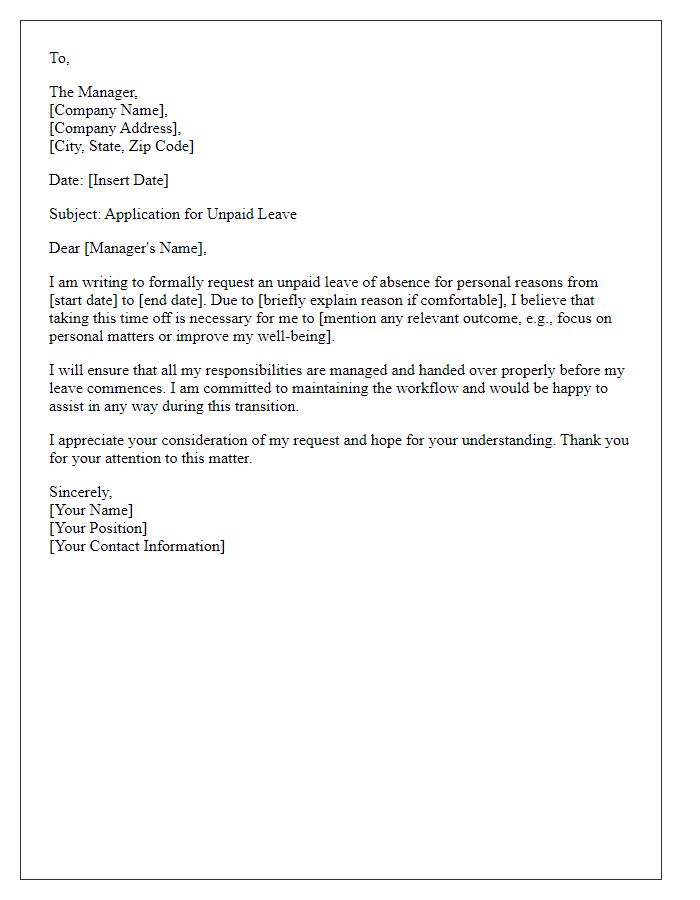
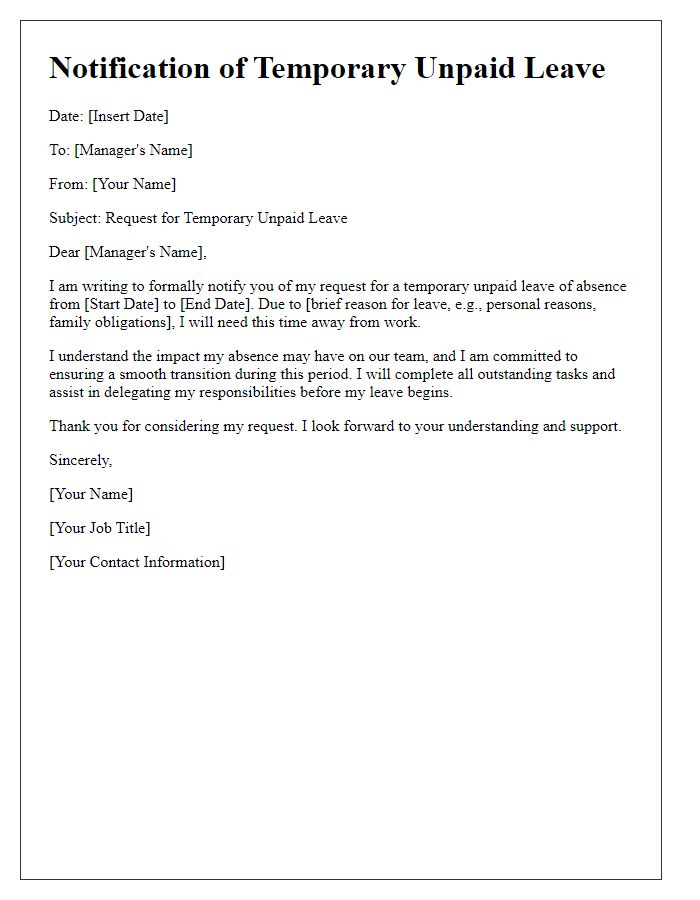
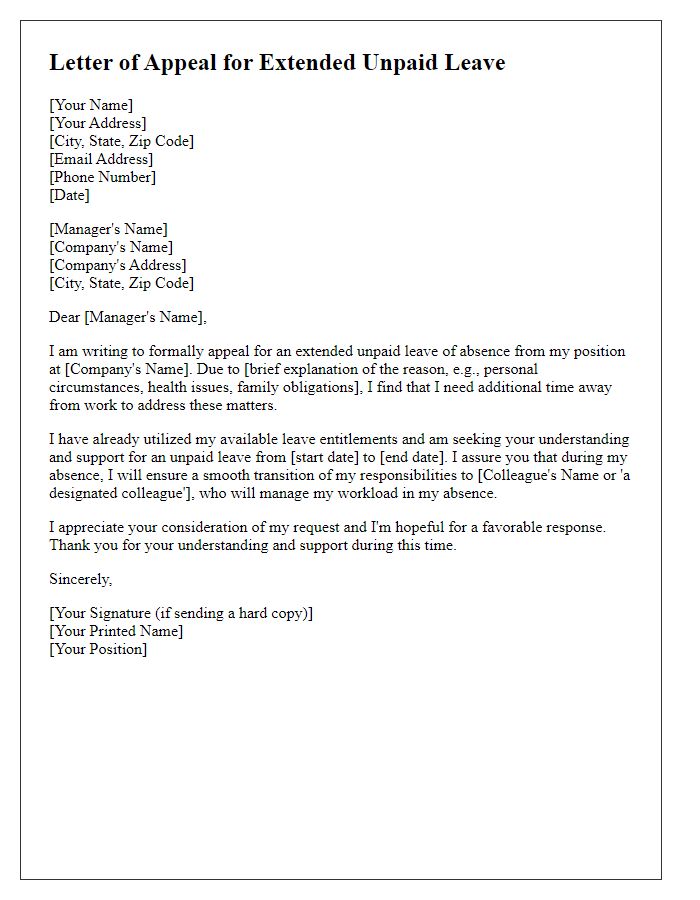
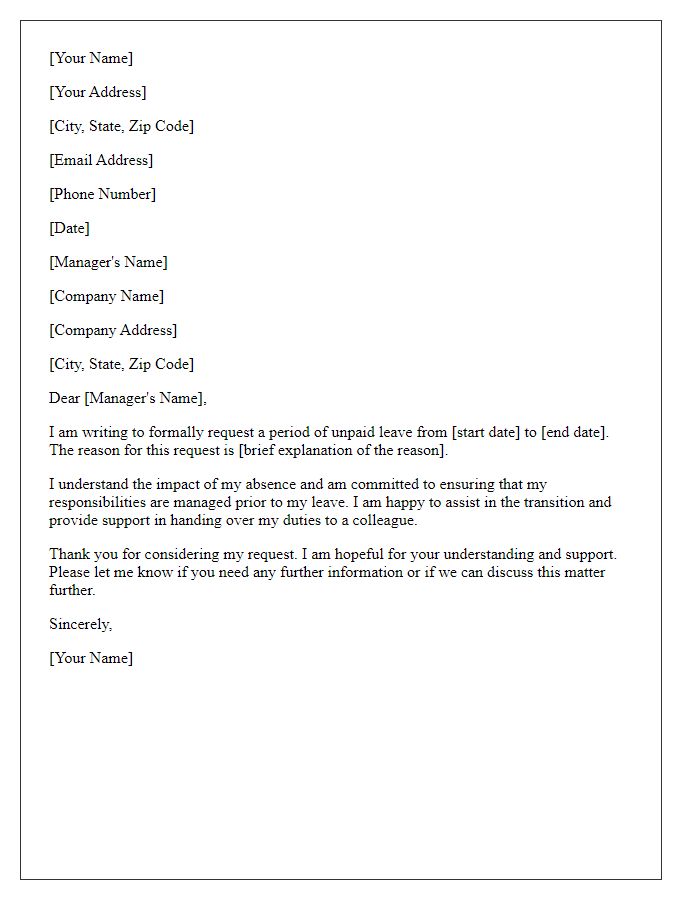
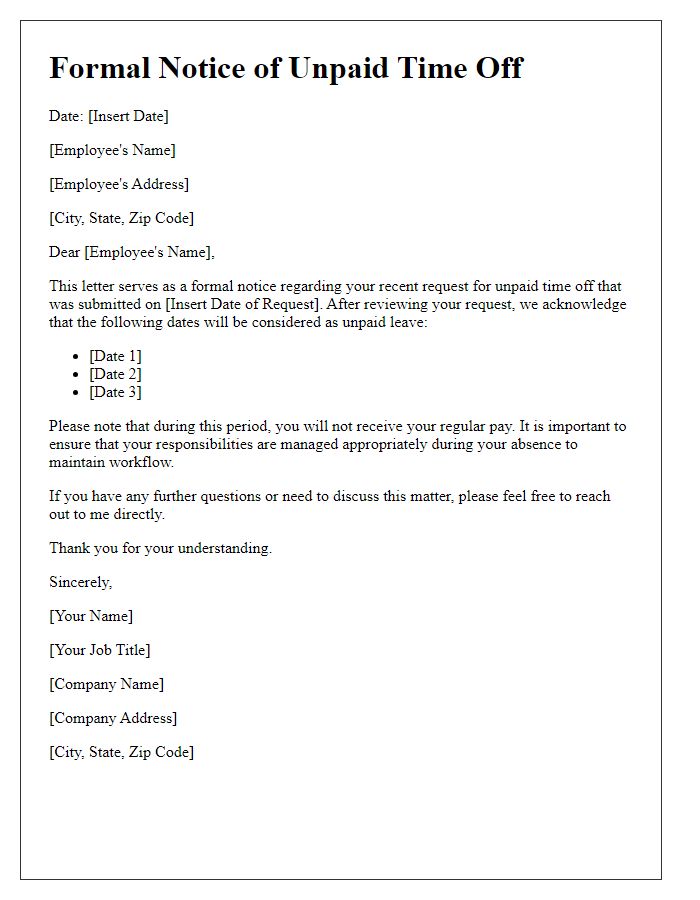
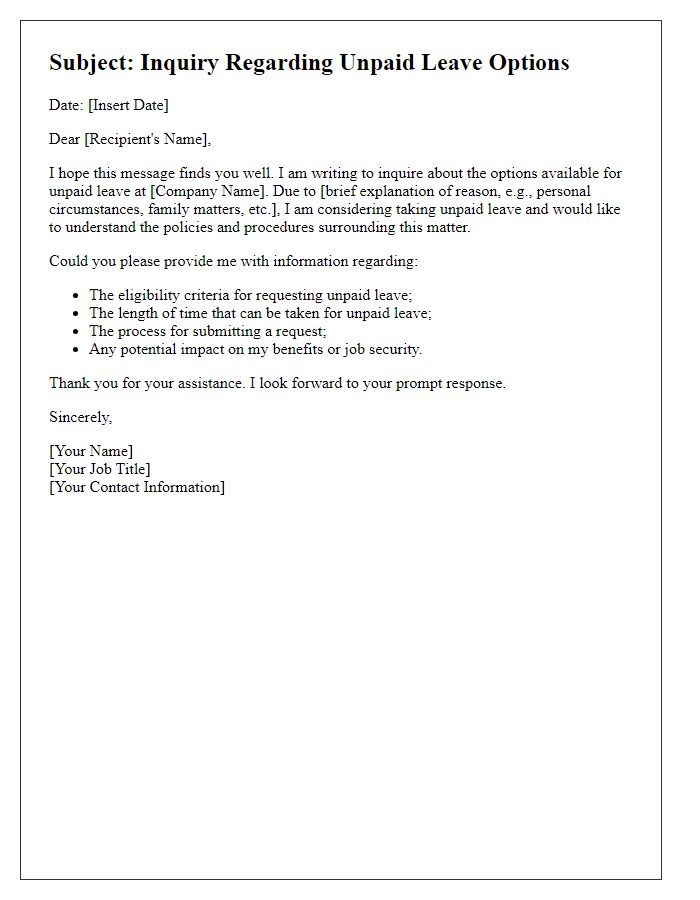
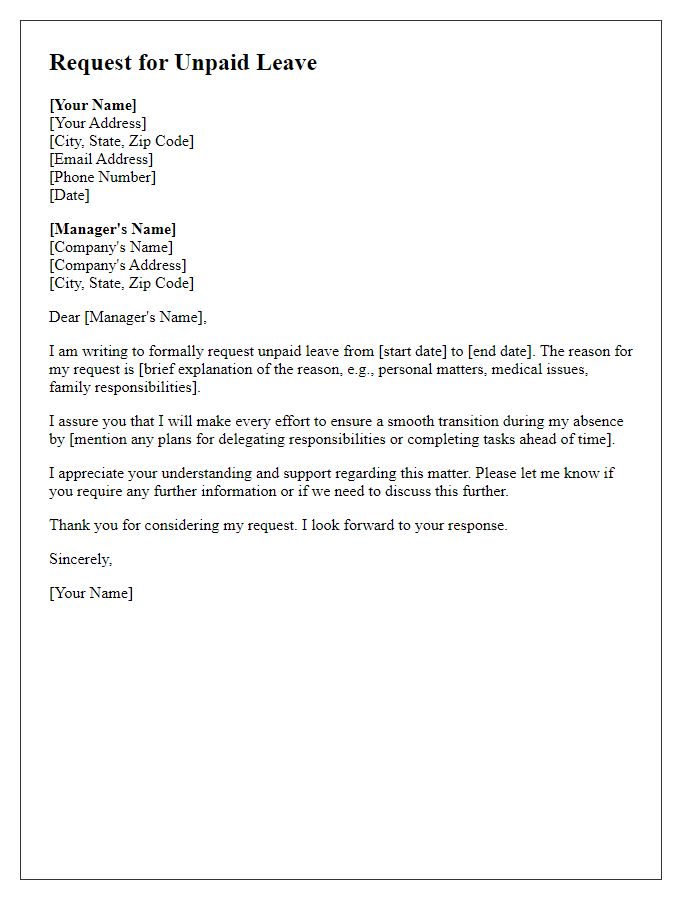
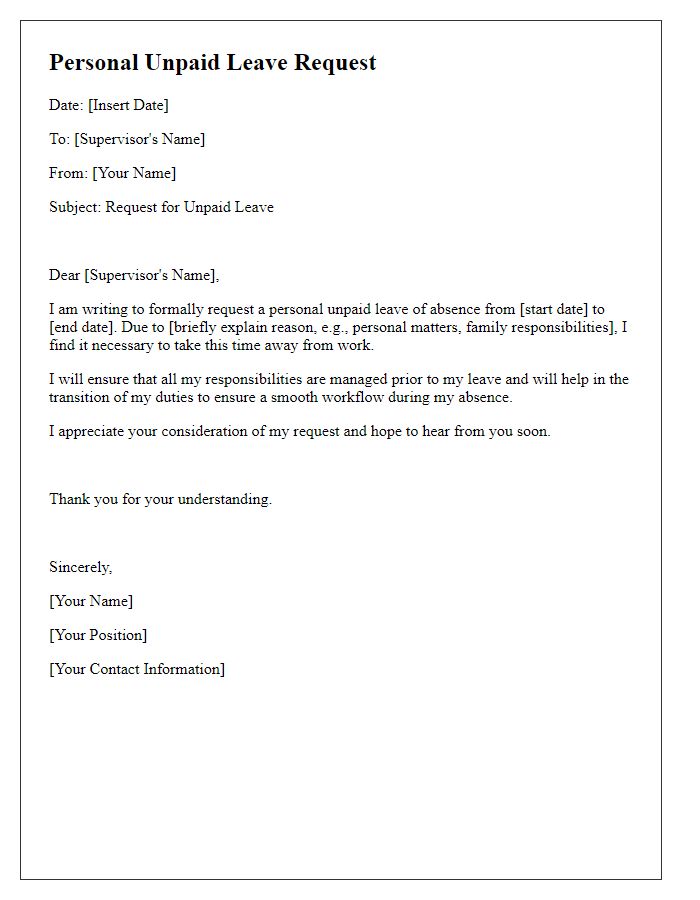



Comments